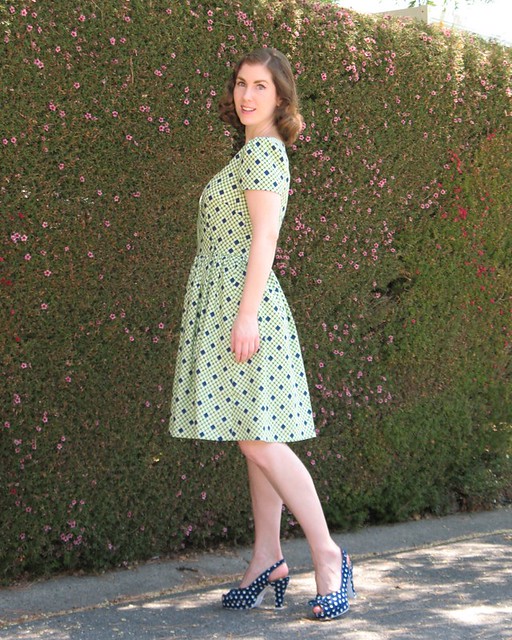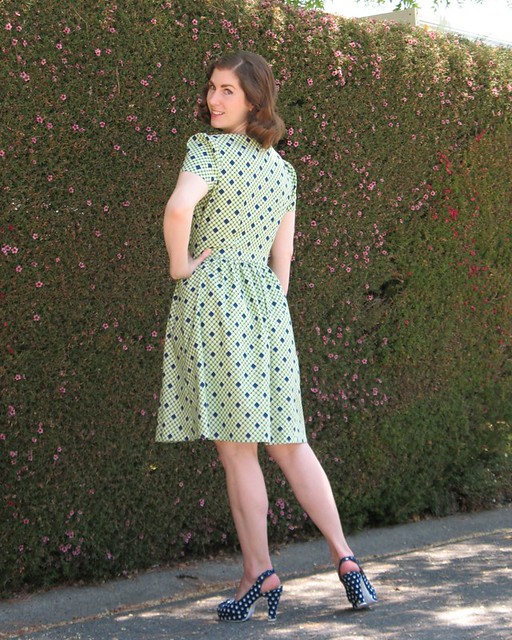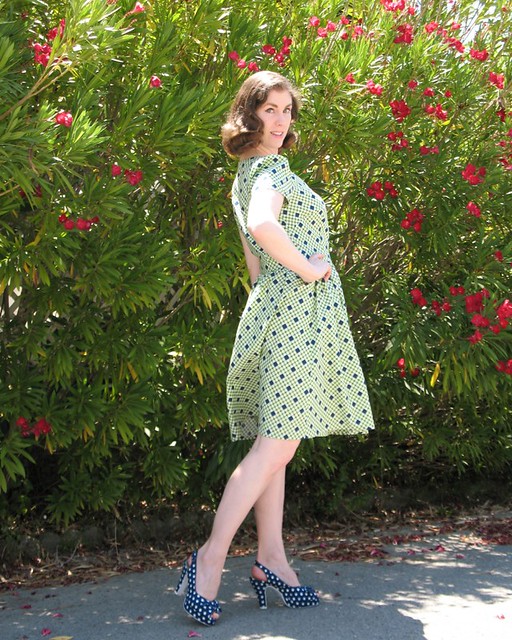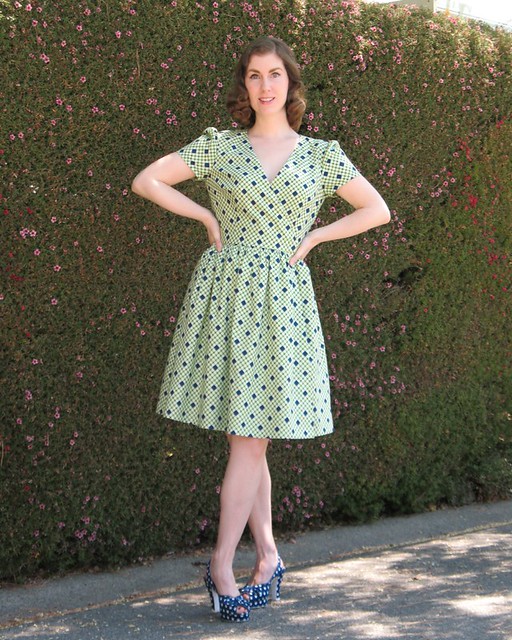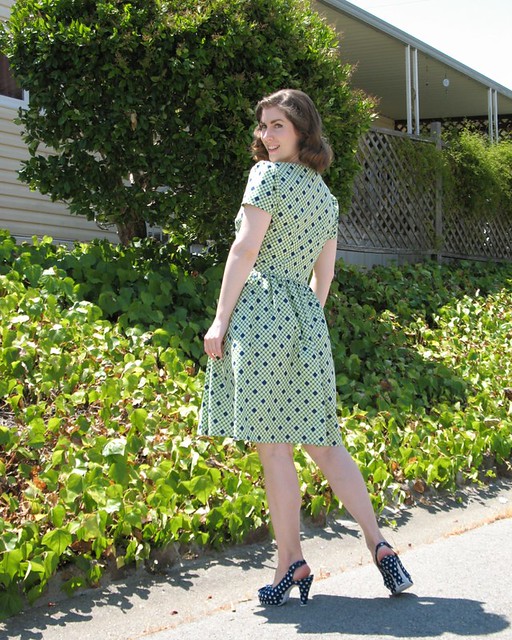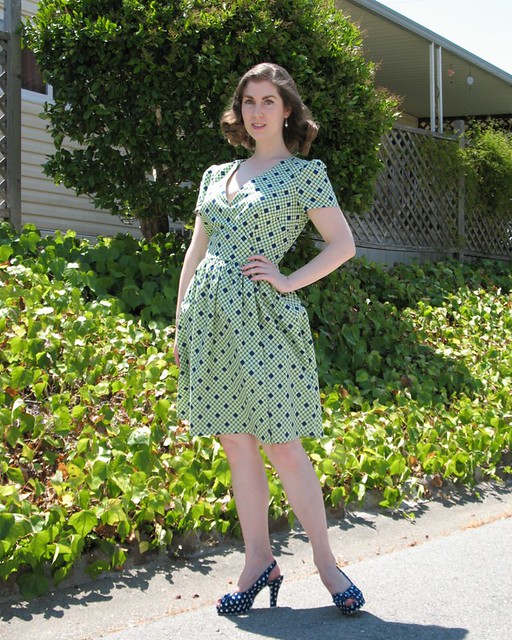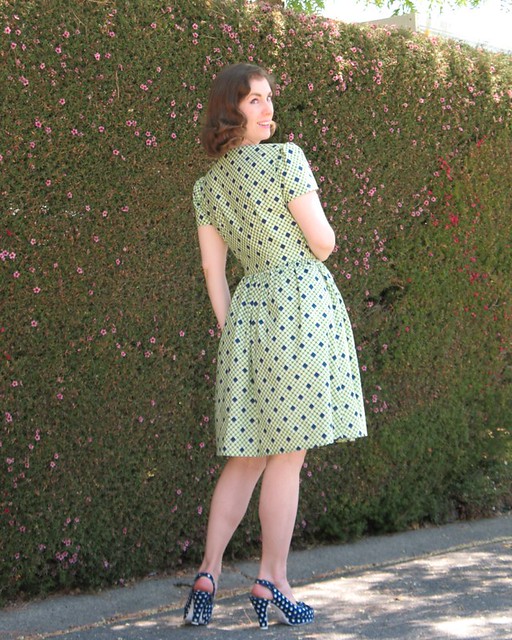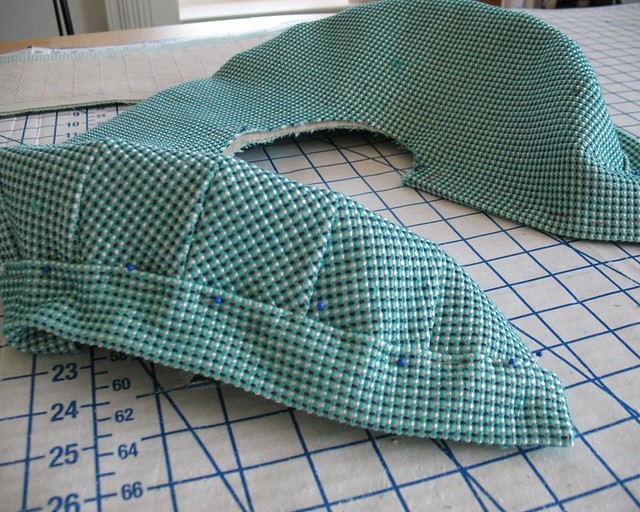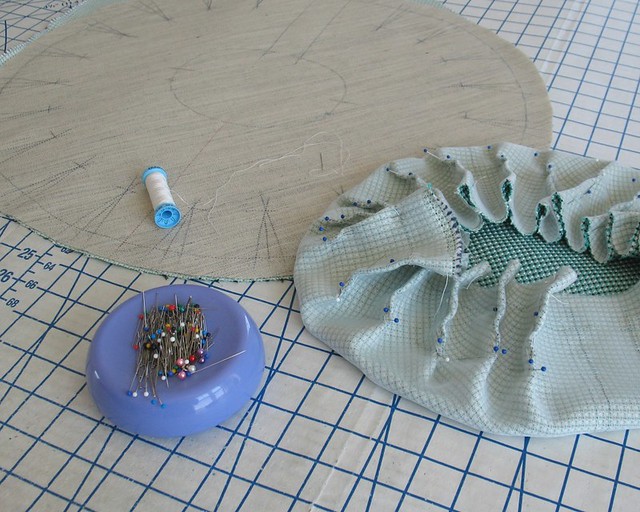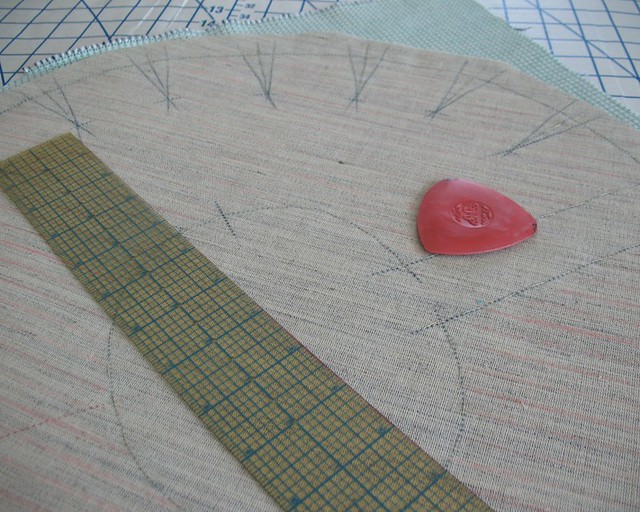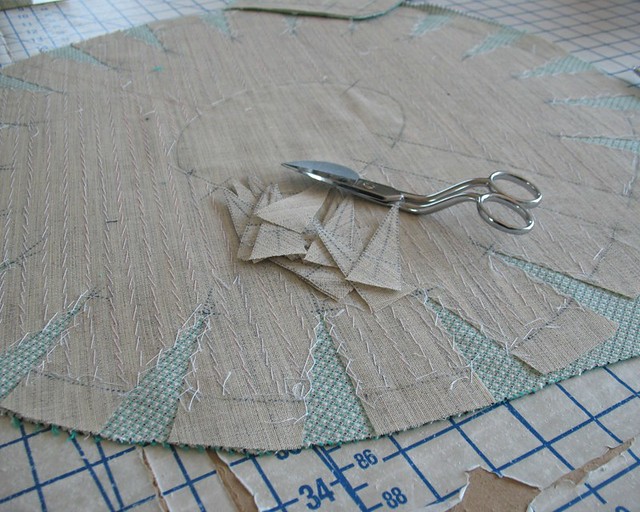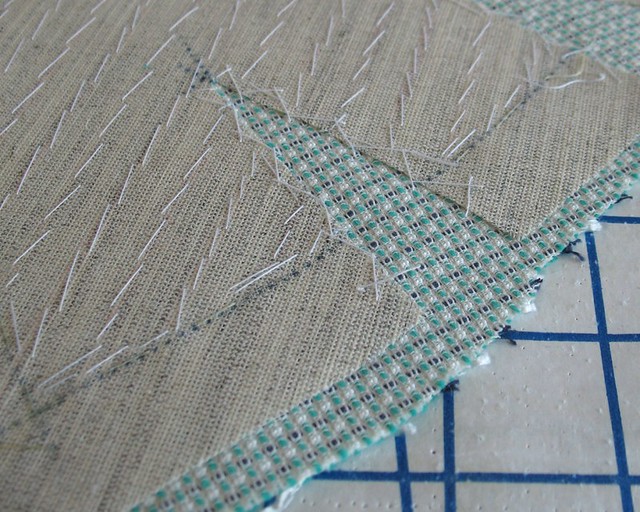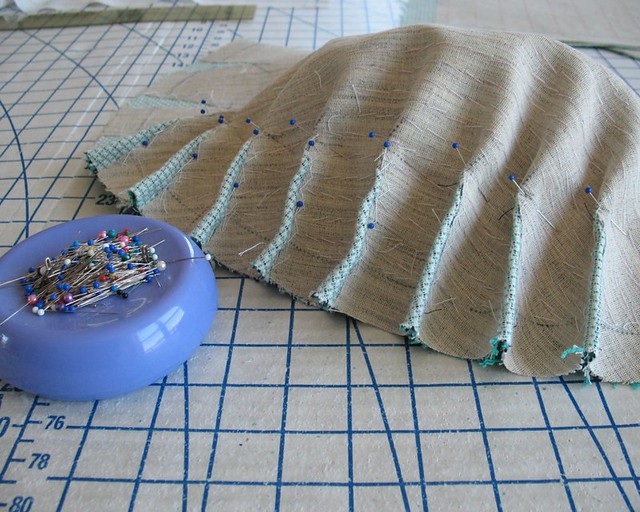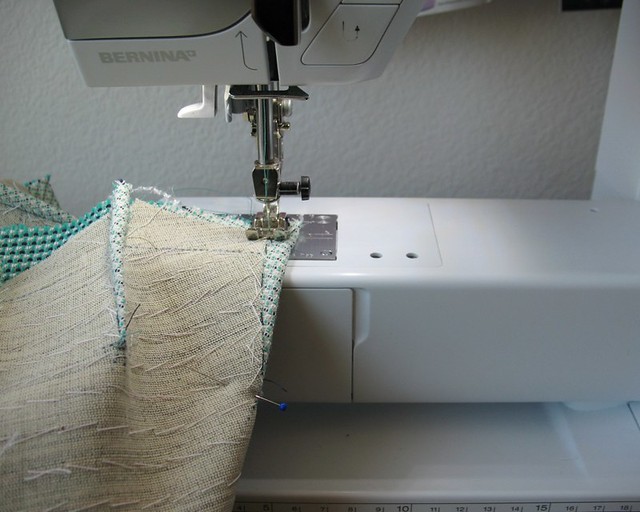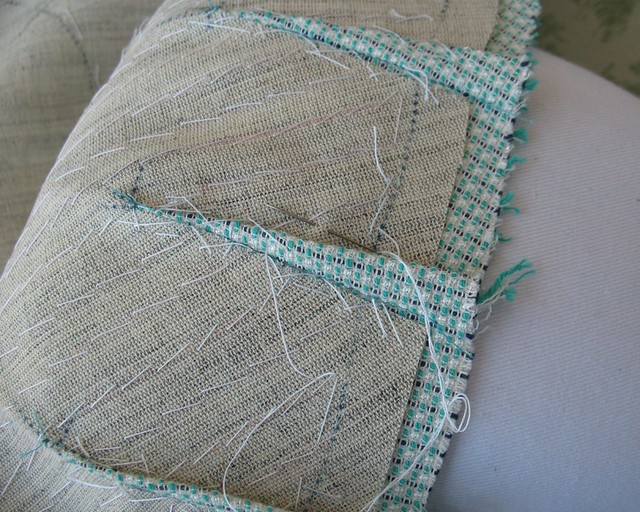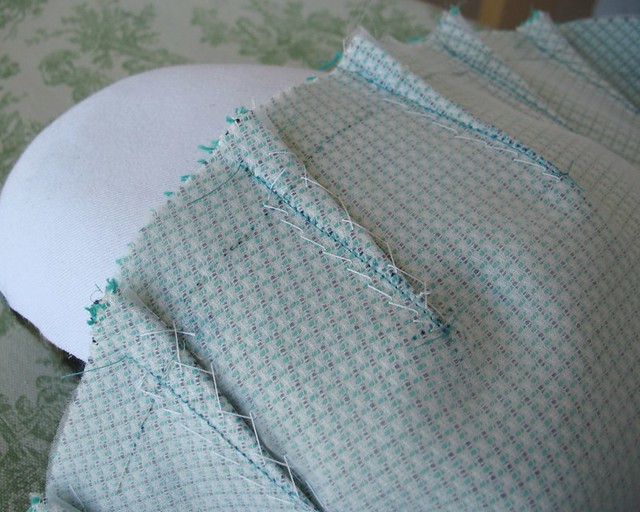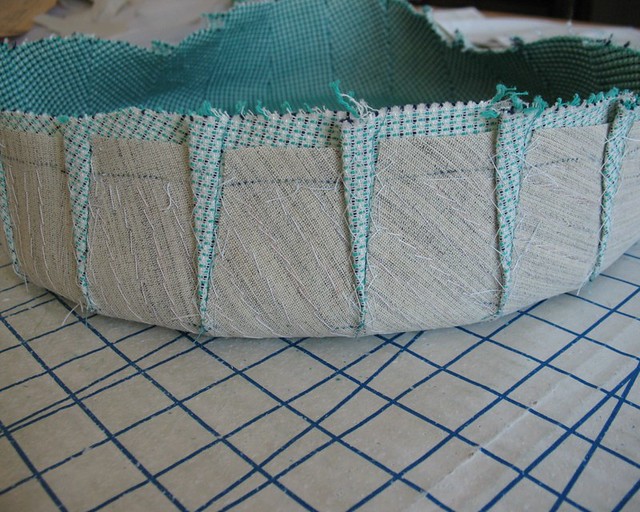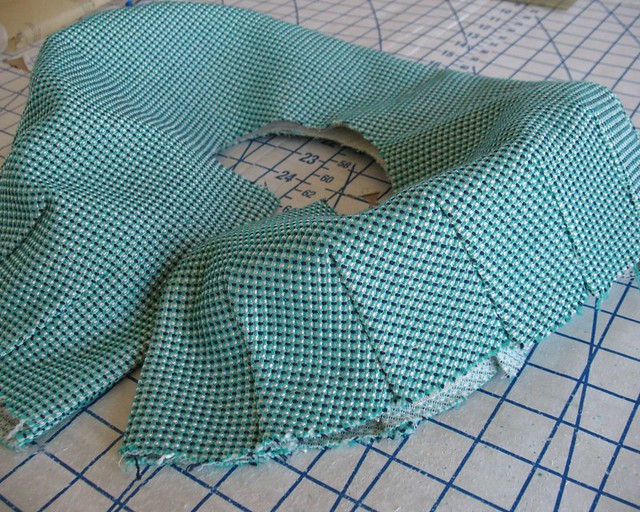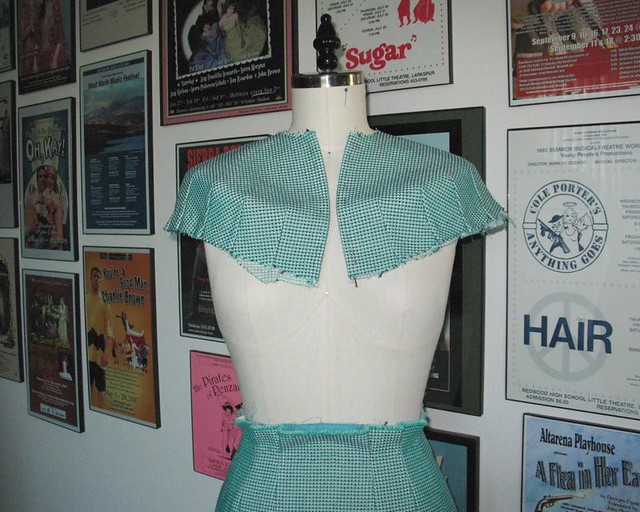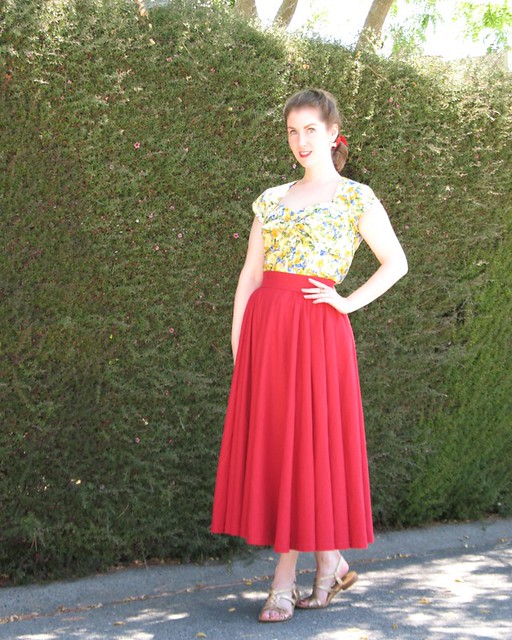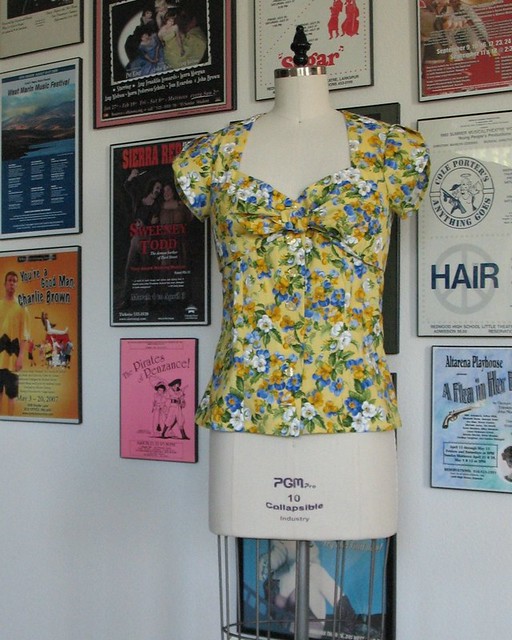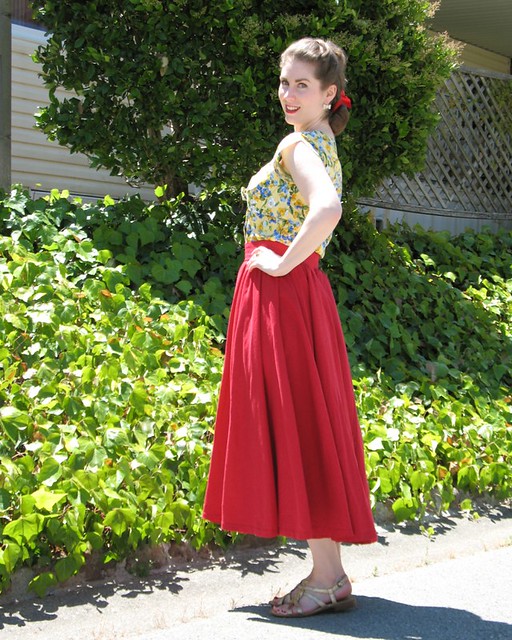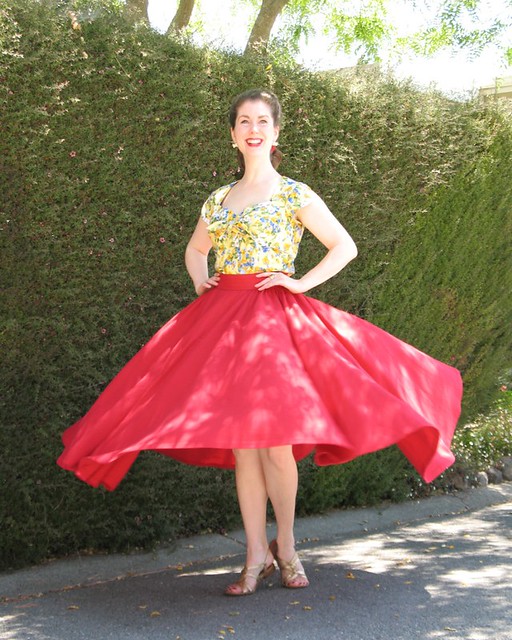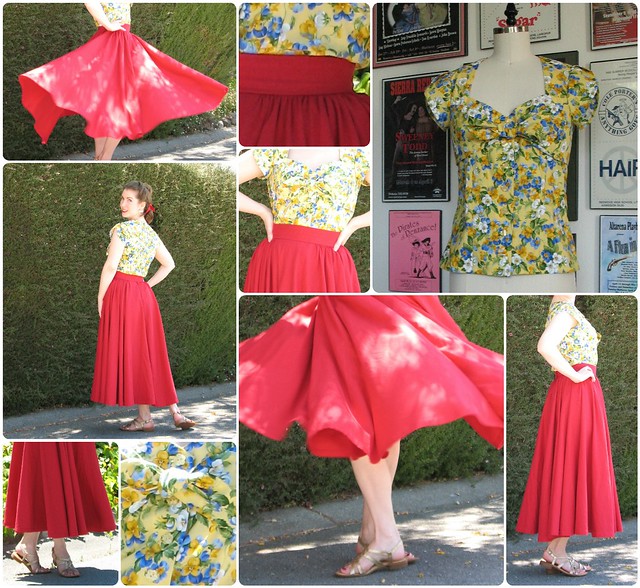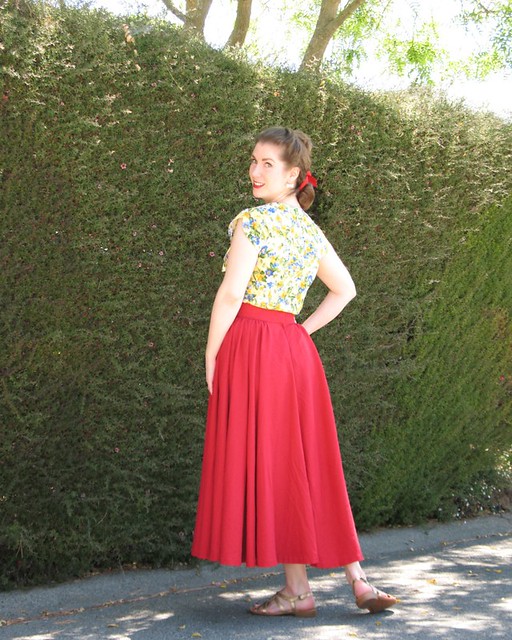So now that I have professed my love for
the most recent Vintage Vogue designs, I am curious as to how accurate they really are in
contrast to the originals.
Eva Dress recently authored a post showing, in detail, alterations that were made to one of Vogue’s reproduction patterns,
Vogue 2962. This is a bit disconcerting as they supposedly use original pattern tissue to draft these re-issues. I know the instructions are changed significantly, but moving zipper openings and changing style lines really do not fall into the category of re-sizing for a current fit standard.
 |
A Vintage Vogue reproduction
with some fairly significant changes made to the original. |
About one year ago, I requested that McCall Company do exactly what she has
done – show us a point by point comparison of the original versus the reproduction. What
about a blog article with an explanation why they make the changes they do? They were kind enough
to respond, but the answers were not very helpful, in my opinion. I was definitely looking for more
clarity!
Here is part of my email along with their responses marked in purple:
****
To get to the really important stuff, I (and quite a few
others from the conversations I have had) are very interested to know what kind
of re-sizing goes on with the vintage reproductions. I have worked with
quite a few original vintage patterns, and the only real fit differences I
have noticed is skirt lengths are generally longer, bust darts extend further
toward the bust apex than is popular in a contemporary silhouette (most people
no longer wear bullet bras, obviously!), and armholes are often smaller.
Would you give us examples of specific fit/design changes that are being made
to these patterns?
All sizing on our patterns is by
the current standards. The standards have been in place since
"modern" sewing. While we utilize the markings and specific pattern pieces
for the Vintage designs, they are graded as we grade all our patterns.
[But what does that really mean? How have those standards changed . . . ? ]
A Butterick pattern from the mid-1950s sizing chart is
34-28-37. The current sizing chart is 34-26.5-36. So, in fact,
vintage sizing is more generous than the current standard which is probably
unexpected for most people.
As mentioned above, our industry
standards have been in place for years and we gear our sizing around them. The
caption of each pattern will indicate if it is close fitting, semi
fitted, loose fitting, etc. The finished garment measurements are also on the patterns.
Everyone complains about the amount of ease built into the contemporary designs
produced, but in my experience, the finished measurements of a Retro Butterick size
12/Bust 34 end up being quite similar to a vintage 1950s Butterick, size
16/Bust 34 – but that probably has something to do with the fact that I use an
upper bust measurement in place of a full bust measurement. If, in fact,
you measure in at a 26.5” waist, the extra 2”+ ease given on the retro line
seem rather excessive for a fitted waist. What is the standard amount of
ease drafted into a “fitted” design?
It is up to the individual designer
of each brand how much ease is in a pattern. There is no standard amount.
[What designer? Do they mean the individual who re-drafts the design?]
I would love to have one of the current Vintage Vogue design offerings
“deconstructed” for us, i.e. this was the original size, the finished tissue
measurements were x,y,z and they ended up as a,b,c on the reproduction.
Vogue 8974, for instance, looks to be fitted through the bust and waist – but
how do the finished measurements compare with the original?
Again, we
use the pattern pieces from the original Vogue Pattern, but
grade in current sizes. It is really not practical and could be confusing to
list what the pieces were vs what they are. However, that is a great idea for a
Vogue Patterns Magazine article and I will pass that along to our
editor.
[Clearly I do not mean they should list this on each individual pattern, but one or two specific examples might be nice.]
And how about the instructions? How significant are the changes made to the vintage pattern instructions. I can understand adding bias strip pattern pieces to a repro design where the original would have a few sentences about cutting your own, but how many other changes are being made, short of substituting words for clarity like slide fastener for zipper and press studs for snaps?
Like the sizing, we reference the original instruction sheet if it is available but use our modern methods.
[I am still not sure why these changes are really necessary. I have learned so much from vintage pattern sheets, I think it is a disservice to ignore some of the older techniques. I am pleased to see that
Vogue 9127 includes a side snap extension in addition to a size zipper. Some of the Vintage Vogues from ten or so years ago had these details included, and I am please to see they are coming back.]
Are details being dumbed down for a contemporary audience that may not have
grown up with a needle in hand? Are gathers substituted for pleats, zippers
for plackets?
Each brand designer decides what details they would like on
their designs. Designs are coded as Very Easy, Easy and up to Difficult
depended upon the details. We try and provide a full range of designs and
difficulty to appeal to many customers.
We have an extensive archives of catalogs beginning in 1863 for Butterick and
later for McCalls and Vogue. For Butterick and McCalls, we
research the catalogs and choose designs. For Vogue, we search our own stash
and borrow from others actual patterns to work from.
[If they are working from actual patterns, why are significant alterations being made to style lines? And why do they mention "designers" when they are dealing with a physical pattern and pattern instructions?]
Are there any trends as far as commercial success goes? Which decades
sell better than others?
We know our consumers love the 50's but we
have a range of patterns from all the brands back to 1912 up to the
60's.
****
Hopefully the recent success of
this Archive Collection pattern makes it clear that many of us vintage aficionados are looking for more challenges and new decades of style to discover.
 |
| Clearly this design did not use the 16" invisible zipper required by McCall 7154. Are hook & eyes and snap plackets really so terrible they must be eliminated from the contemporary home sewing lexicon? |
The McCall Company's standard answer seems to be that they “resize to fit our current sizing”
- but that does not explain moving a zipper opening, raising
the back of a garment, or straightening out a curved seamline. Why would they make those alterations?
Now we have actual proof from
Xandra that McCalls is doing more than re-sizing to fit the
current size chart (whatever that pat answer means), and are making significant alterations to the original pattern tissue with their
Vintage Vogue line.
I will continue to use these patterns, but I do find it
strange that McCalls has clearly stated that Vintage Vogue (unlike
The Archive Collection and
Butterick Retro patterns) use original pattern tissue to recreate
their patterns. Then why all the changes?
So I am renewing my appeal for more transparency. I hope that in the near future we actually get a point by point run down of one
of these designs and all of the alterations, for better or worse. If I had my druthers, it would also include a
list of instructional changes that were made and why. Inquiring minds want to know!
Are you a purist when it comes to vintage patterns, or do you like using the reproductions? For myself, I like both, but I know some people feel strongly one way or the other. What are your feelings on the subject?



